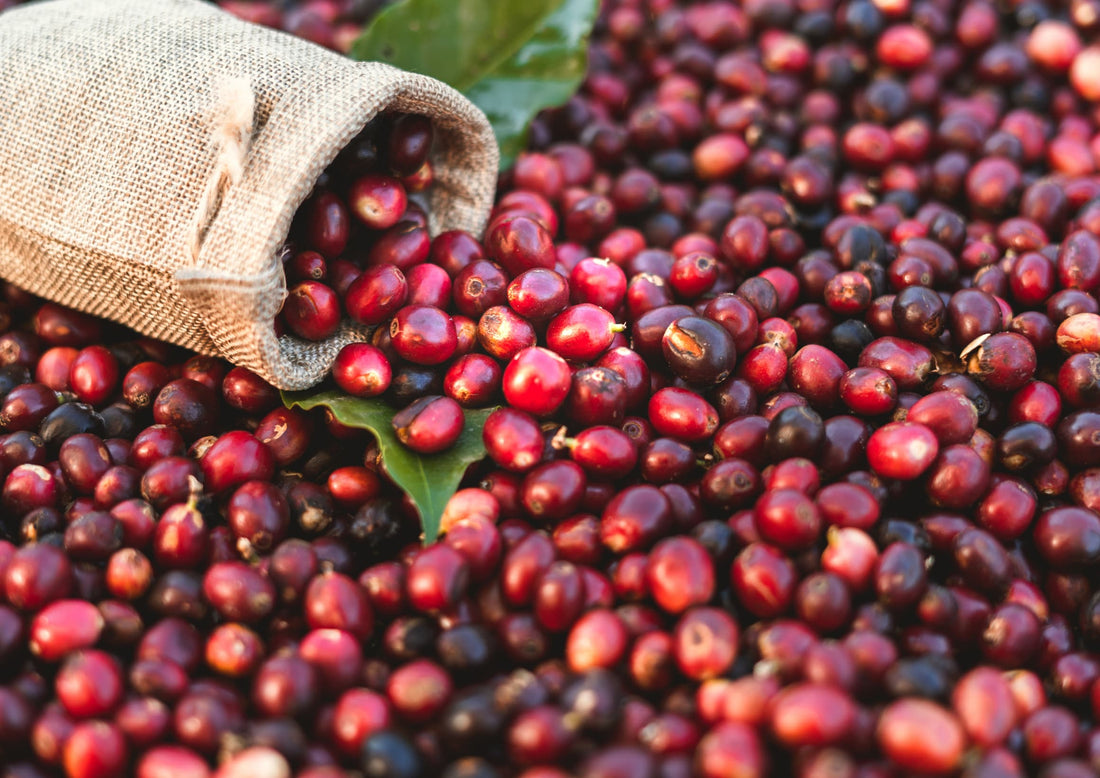Reading material
Four refining methods

The refining method is the processing method used to extract the seeds (green beans) from the coffee fruit (coffee cherry). Just different processes can significantly change the taste and aroma of coffee. By learning about the refining method, you can better understand the differences in coffee flavors and find the coffee that's perfect for your tastes.
In this article, we will introduce the four most common refining methods and their distinctive flavors!
1. What is coffee refining?
Have you ever seen words like "natural," "washed," or "honey" on a coffee package? These don't refer to the variety or origin of the coffee beans, but to a processing method called "refining method." Refining is the process of removing the seeds from the coffee cherry (coffee fruit) and shipping them as green beans.
Coffee is harvested while covered in pulp and mucilage, and the quality of the green beans is determined by properly removing these and drying them. Differences in the processing method have a significant impact on the taste and flavor of the coffee. Understanding the differences in processing methods is important in finding the coffee that suits your taste.
2. Four major refining methods and flavor characteristics
Coffee processing methods can be broadly divided into four categories. Let's take a look at how each method affects the flavor of the beans.
2-1 Natural (Dry / Unwashed) | Sweet and fruity
Natural processing is a method in which harvested coffee cherries are sun-dried with the pulp and then threshed. This simple processing method does not require water and is widely used, especially in areas with limited water resources (Ethiopia and Brazil). By drying the cherries with the pulp still attached, the coffee retains a strong fruity sweetness and aroma. Naturally processed coffee often has wine or berry flavors.
Natural features
- Fruity sweetness and richness
- Rich aroma and mellow flavor
- No water is used, so there is little environmental impact
Disadvantages of natural
- Easily affected by climate and difficult to stabilize quality
- If fermentation progresses too much during the drying process, the flavor will tend to become peculiar.
2-2 Pulp Natural (Semi-Washed) | Moderate sweetness and clarity
Pulped natural (honey process) is a refining method somewhere between washed and natural. After removing the pulp, the beans are dried, leaving the mucilage behind. The sugars in this mucilage soak into the beans, adding a moderate sweetness and mellowness, though not as sweet as natural honey. In Costa Rica in particular, honey is classified into "white honey," "yellow honey," "red honey," and "black honey" depending on the amount of mucilage remaining.
Characteristics of Pulped Natural (Honey Process)
- Subtle sweetness and clear aftertaste
- A taste between natural and washed
- Low water consumption and low environmental impact
Disadvantages of Pulped Natural
- It is difficult to control the quality of the mucus, and if fermentation progresses too far, the quality becomes unstable.
2-3 Washed (wet/water-washed) | Clear and refreshing taste
Washed processing is the most widely used processing method. After removing the pulp, the beans are soaked in a fermentation tank to remove the mucilage, then rinsed with a large amount of water and dried. The greatest feature of this method is that it produces a clean, bright taste with a pronounced acidity. It is also a processing method that makes it easy to make uniform bean quality and produce coffee of consistent quality.
Washed characteristics
- Clear and refreshing taste
- Bright acidity and clean finish
- Quality is easy to stabilize
Disadvantages of Washed
- Uses a large amount of water, which places a heavy burden on the environment
- Requires capital investment and high production costs
2-4 Sumatran style | Unique deep flavor and spicy taste
The Sumatran method is a unique refining method that originated on the island of Sumatra, Indonesia, and is also known as "Giling Bazar." Normally, the parchment (inner skin) is removed just before shipping, but in the Sumatran method, the coffee is threshed when it is semi-dry and then dried. This refining method gives it a distinctive earthy flavor, which is often found in Indonesian Mandheling.
Characteristics of the Sumatran style
- Rich, full-bodied and profound taste
- Unique aroma of spices and herbs
- Great with dark roasts
Disadvantages of the Sumatra method
- Because the beans are dried while still soft, they are prone to producing defective beans.
- The drying process is difficult, and quality tends to vary.
3. Summary
Knowing how coffee is processed makes choosing beans more fun.
Understanding the differences between each process will help you appreciate the unique flavors. Find the flavor that suits your taste and enjoy the world of coffee even more!